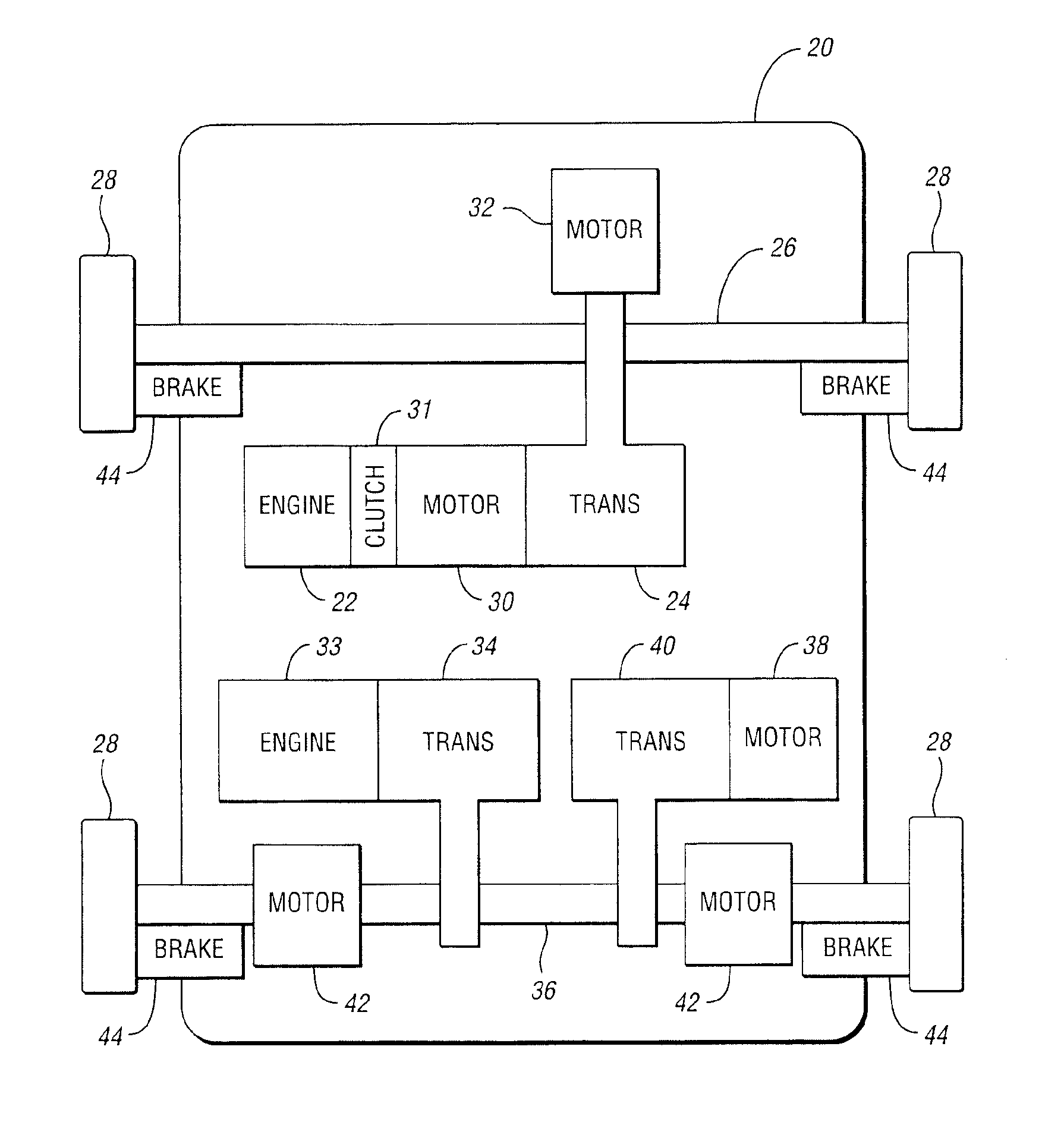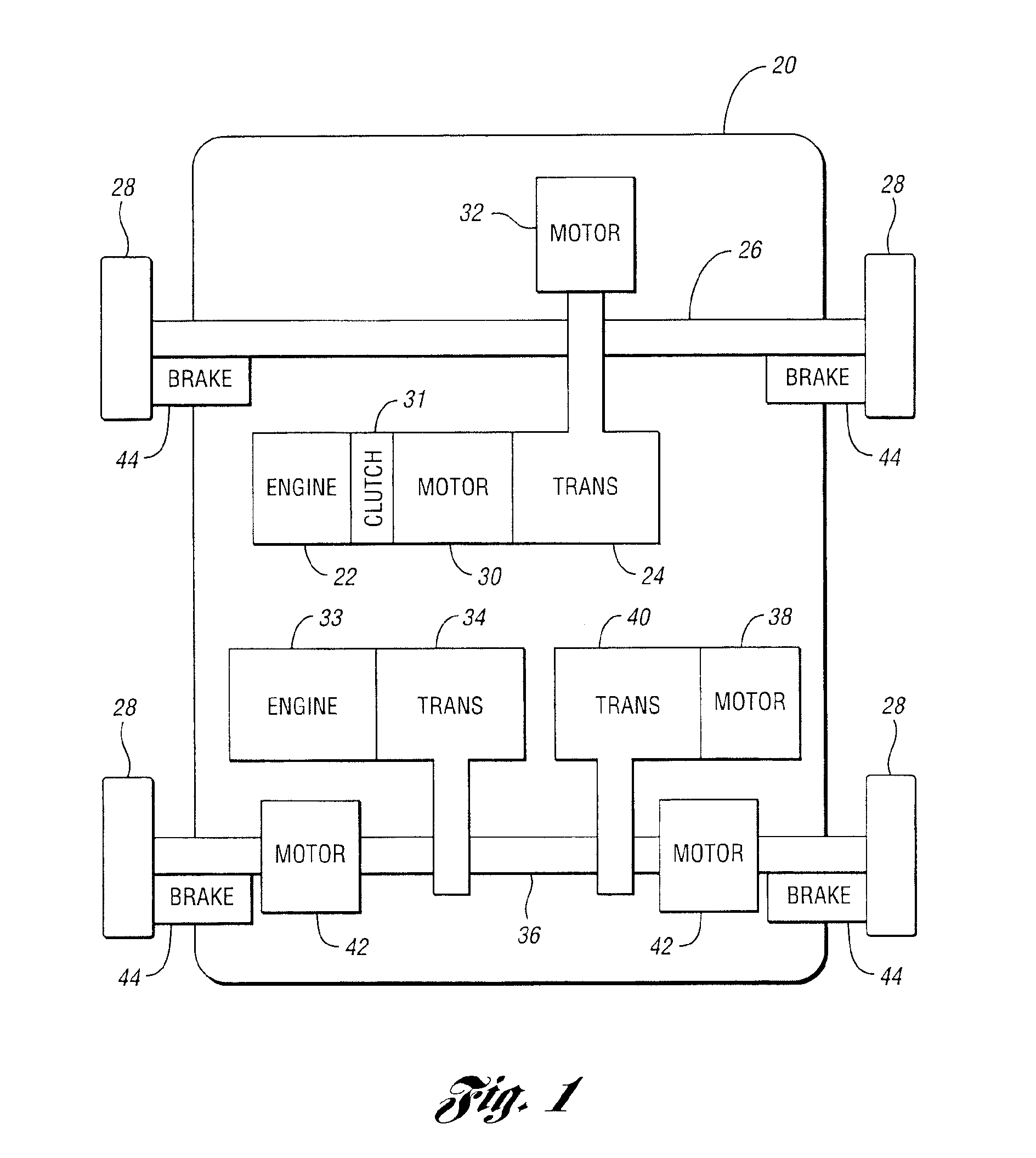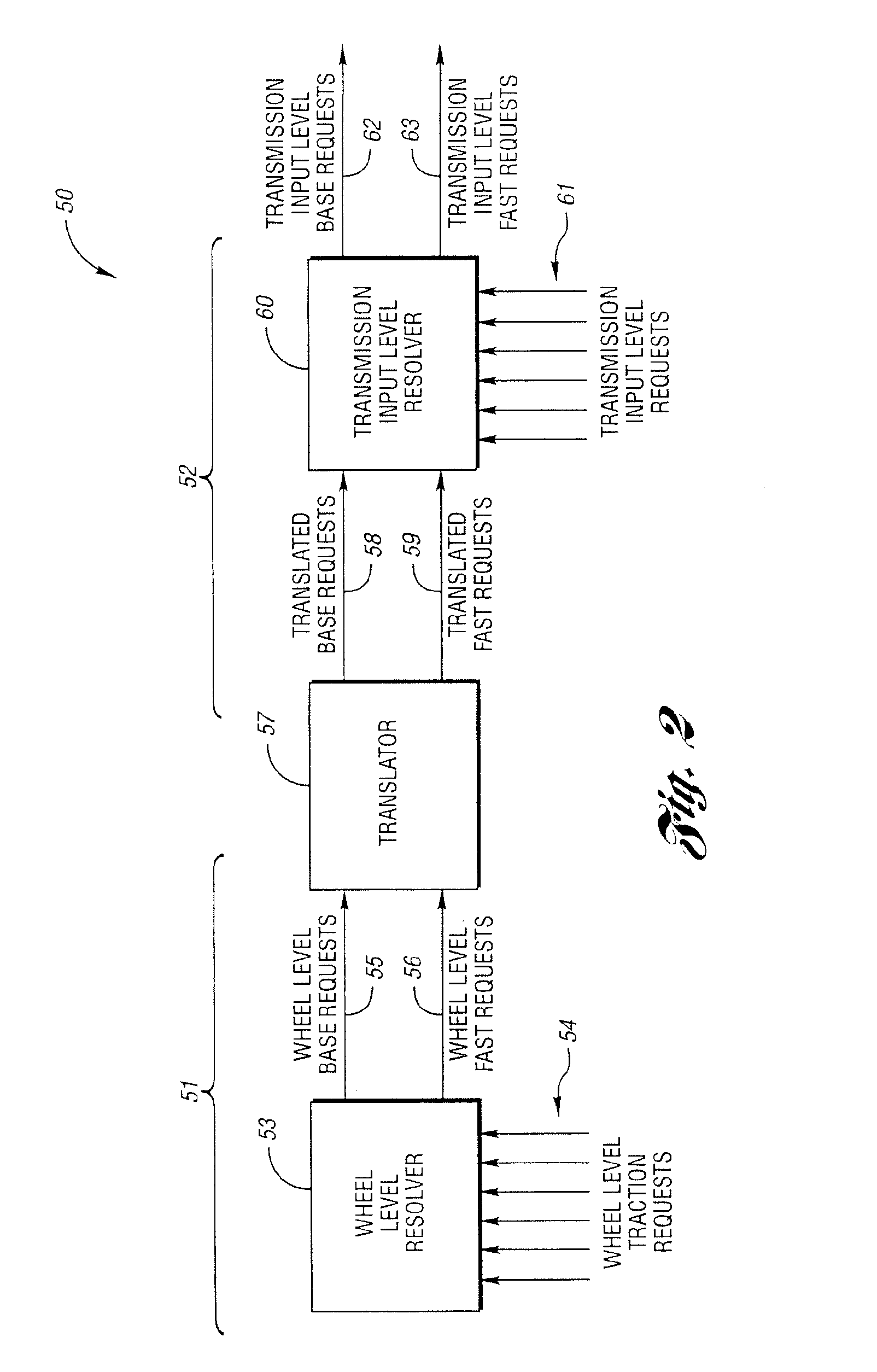Vehicle torque coordination
a technology of torque coordination and vehicle, which is applied in the direction of braking system, jet propulsion mounting, instruments, etc., to achieve the effects of improving driveability, fuel economy and exhaust emissions, and being less prone to failur
- Summary
- Abstract
- Description
- Claims
- Application Information
AI Technical Summary
Benefits of technology
Problems solved by technology
Method used
Image
Examples
Embodiment Construction
Referring to FIG. 1, a schematic diagram illustrating torque producing devices according to an embodiment of the present invention is shown. Vehicle 20 may include a plurality of torque producing devices. Torque producing devices include any of a wide variety of internal combustion engines (ICE). Various types of motors may also be employed, including those powered by energy storage devices such as batteries, accumulators and the like; powered by power generating devices, such as engines, fuel cell systems, solar cell systems, and the like; or powered by any combination of these.
For example, engine 22 transmits torque through engine transmission 24 to front axle 26 thereby driving wheels 28. Engine transmission 24 is controlled to convert torque from engine 22 to axle 26 using various mechanisms such as torque converters, gears, and the like. Transmission 24 may be manual, automatic, continuously variable, composed of one or more planetary gear sets, or of any other suitable constru...
PUM
 Login to View More
Login to View More Abstract
Description
Claims
Application Information
 Login to View More
Login to View More - R&D
- Intellectual Property
- Life Sciences
- Materials
- Tech Scout
- Unparalleled Data Quality
- Higher Quality Content
- 60% Fewer Hallucinations
Browse by: Latest US Patents, China's latest patents, Technical Efficacy Thesaurus, Application Domain, Technology Topic, Popular Technical Reports.
© 2025 PatSnap. All rights reserved.Legal|Privacy policy|Modern Slavery Act Transparency Statement|Sitemap|About US| Contact US: help@patsnap.com



